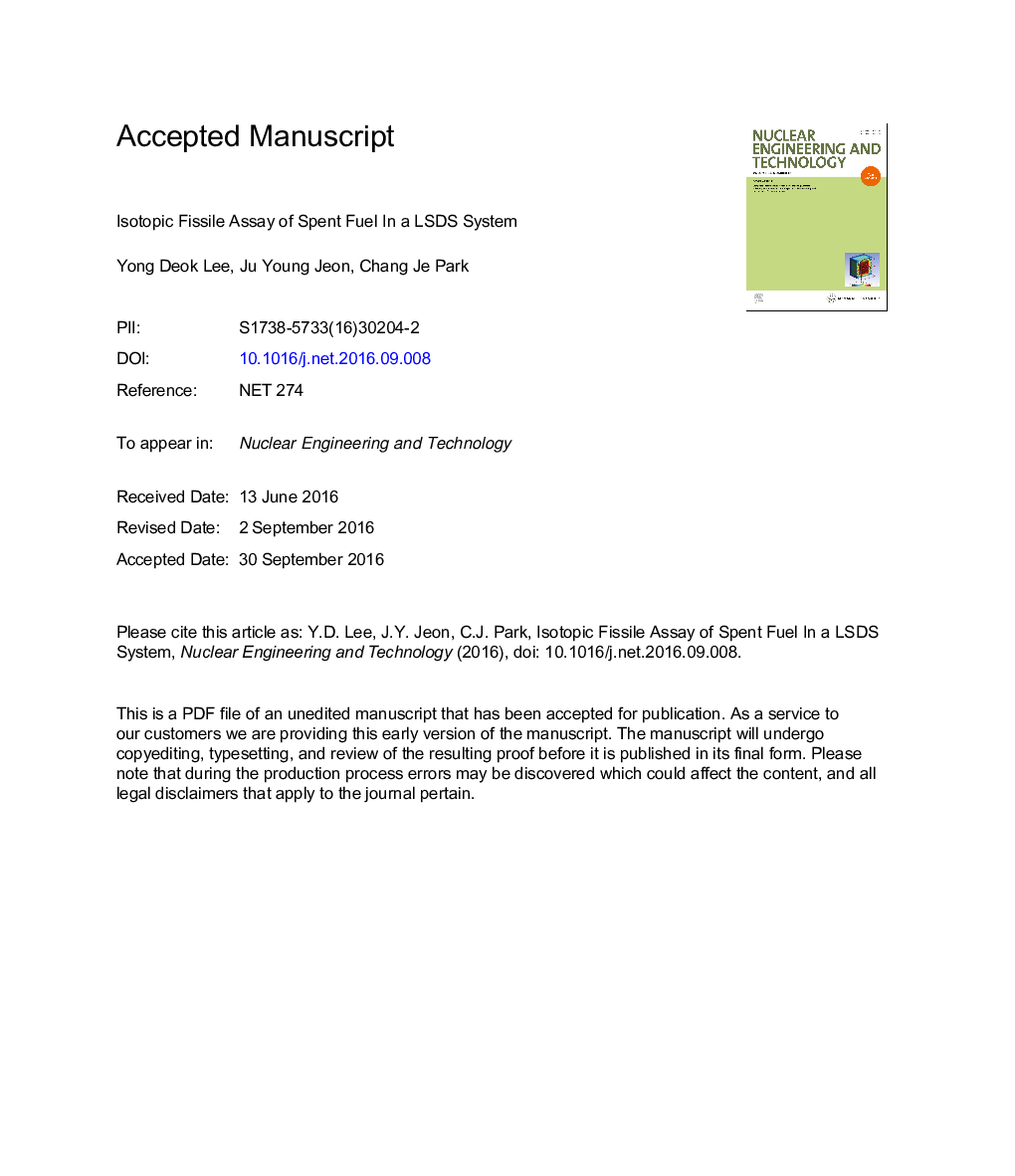| Article ID | Journal | Published Year | Pages | File Type |
|---|---|---|---|---|
| 5477827 | Nuclear Engineering and Technology | 2017 | 15 Pages |
Abstract
A lead slowing-down spectrometer (LSDS) system is under development to analyze isotopic fissile content that is applicable to spent fuel and recycled material. The source neutron mechanism for efficient and effective generation was also determined. The source neutron interacts with a lead medium and produces continuous neutron energy, and this energy generates dominant fission at each fissile, below the unresolved resonance region. From the relationship between the induced fissile fission and the fast fission neutron detection, a mathematical assay model for an isotopic fissile material was set up. The assay model can be expanded for all fissile materials. The correction factor for self-shielding was defined in the fuel assay area. The corrected fission signature provides well-defined fission properties with an increase in the fissile content. The assay procedure was also established. The assay energy range is very important to take into account the prominent fission structure of each fissile material. Fission detection occurred according to the change of the Pu239 weight percent (wt%), but the content of U235 and Pu241 was fixed at 1 wt%. The assay result was obtained with 2â¼3% uncertainty for Pu239, depending on the amount of Pu239 in the fuel. The results show that LSDS is a very powerful technique to assay the isotopic fissile content in spent fuel and recycled materials for the reuse of fissile materials. Additionally, a LSDS is applicable during the optimum design of spent fuel storage facilities and their management. The isotopic fissile content assay will increase the transparency and credibility of spent fuel storage.
Related Topics
Physical Sciences and Engineering
Energy
Nuclear Energy and Engineering
Authors
Yongdeok Lee, Juyoung Jeon, Changje Park,
